What is Yarn Count?
A count is a numerical value expressing the fineness or coarseness of yarn and also indicating the relationship between length and weight. The concept of yarn count, which specifies a certain ratio of length to weight, has also been introduced. It is also the mass per unit length or the length per unit mass.
Types of Yarn Count Measurement Systems:
There are two types of yarn count. They are:
- Direct count system
- Indirect count system
1. Direct Count System:
In direct count system, the weight of a fixed length of yarn is determined. The weight per unit length is the yarn count. The following formula is used to calculate the yarn count:

Standard table for direct numbering system
| Number system | Unit of length (l) | Unit of weight (w) |
| Tex system (tex) | 1000 meters | 1 Grams |
| Denier (D) | 9000 meters | 1 Grams |
| DeciText (dtex) | 10,000 meters | 1 Grams |
| Millitex (mtex) | 1000 | 1 Milligrams |
| Kilotex (ktex) | 1000 meters | 1 Kilograms |
| Jute Count/linen/hemp | 14,400 yds. | 1 Pounds |
2. Indirect Count System:
In indirect count system, the length of a fixed weight of yarn is measured. The length per unit weight is the yarn count. The following formula is used to calculate the yarn count:

Standard table for indirect numbering system:
| Number system | Unit of length (l) | Unit of weight (w) |
| English cotton count(Ne) | 840 yds. | 1 pound |
| Metric count (Nm) | 1000 meters | 1 kg |
| French or continental count | 1000 meters | 0.5 kg |
| Woolen count (YSW) | 256 yds. | 1 pound |
| Woolen count (Dewsbury) | 1 yds. | 1 ounce |
| Worsted count | 560 yds. | 1 pound |
| Linen count | 300 yds. | 1 pound |
Some Important Conversions for Yarn Count Calculation:
| 1 yds=0.9144 meter | 1 meter= 1.0936 yds. |
| I meter= 39.37 inch | 1 cm= 0.3937 inch |
| 1 gm.= 0.0353 oz | 1 oz= 28.350 gm. |
| 1 pound= 453.6 gm. | 1 kg= 2.2046 pound |
| 1 inch= 2.54 cm | 1 pound=0.4536 kg |
| 1 pond=16 oz | 1 pound= 7000 grain |
Some shortcuts Conversion for Yarn count Calculation:

What is Resultant Count?
Resultant count is the number of yarns that are twisted or folded. Two or more threads are folded or twisted into a single strand form when they are folded or twisted. Two or more of these already twisted yarns are folded together to form a “folded” yarn. For special strength and solid effects, yarns such as fishnet yarns, cords, harness cords, special sewing threads, shoe threads, and so on are cabled.
In case of direct count system, resultant count is calculate by using following formula
N= N1+N2+N3………………….
In case of indirect count system, resultant count is calculate by using following formula.

Exercise:
Problem-1: If the weight of 200 meter cotton yarn is 4.724 grams, what will be its count in Ne, Tex and Denier?
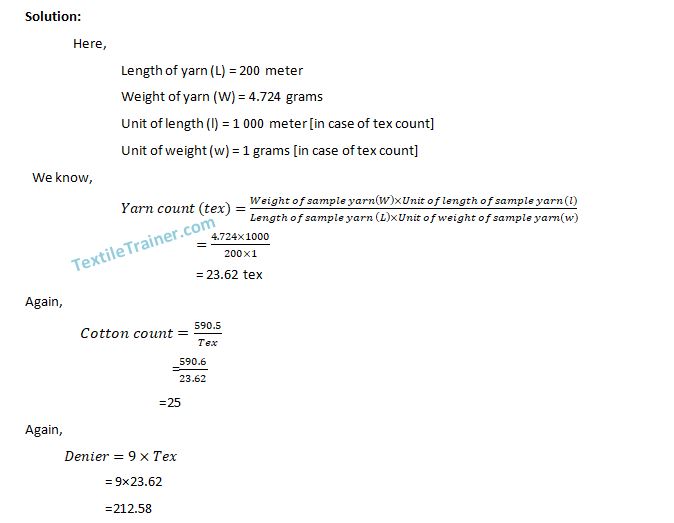
Problem-2: If a skein of viscose filament yarn weighs 1.70 g and its length is 70 m, what is the denier of that yarn?

Problem-3: If 150 yards of jute yarn weighs 3 ounces, what is its count?
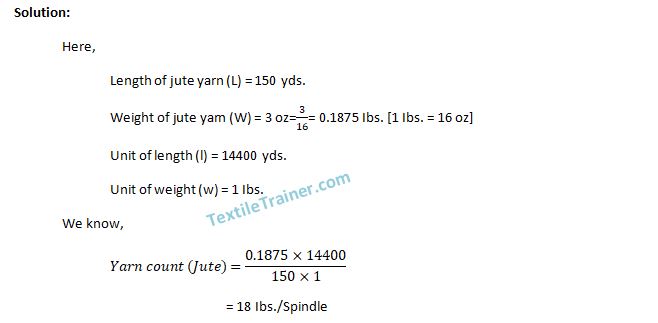
Problem-4: If the weight of 1 lea cotton yarn is 30 grains, what will be the count?
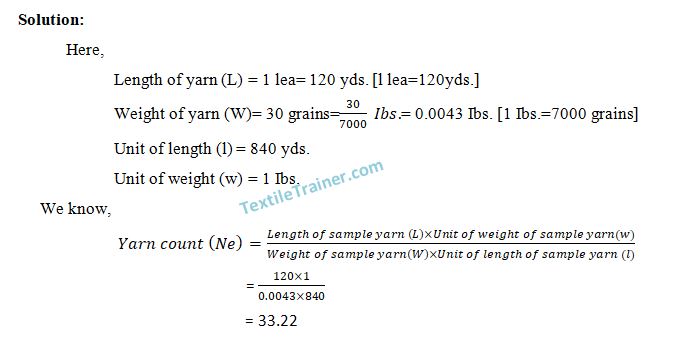
Problem-5: if the weight of 1 lea cotton yarn is 2.16 gm, what will be its count in Ne, tex, denier and Metric count?
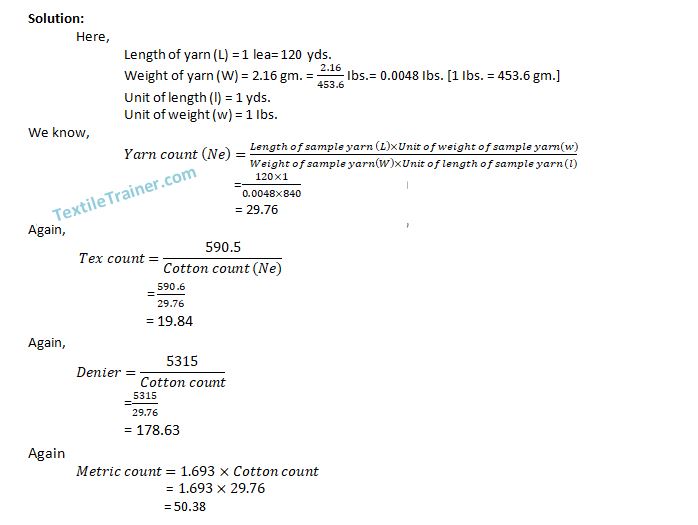
Problem-6: what length of yarn is contained in 1.2 kg of yarn of Ne 30?
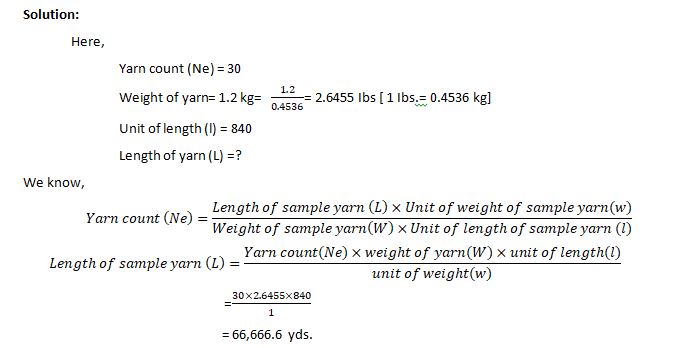
Problem-7: What is the resultant count of 40/3 jute yarn?
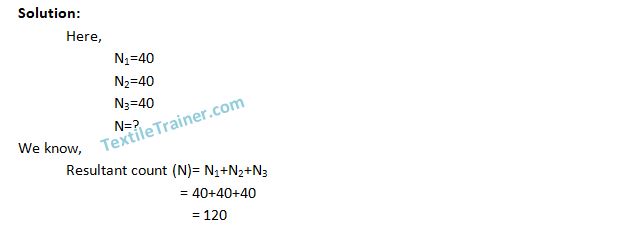
Problem-8: If 3 ply yarn is prepared with 30, 25 and 20 cotton yarn, what will be the yarn count?
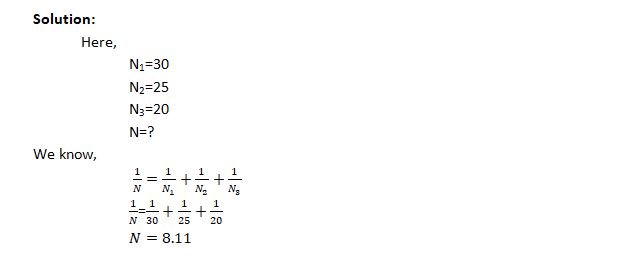
Problem-9: What is the resultant count of 30/2 cotton yarn?
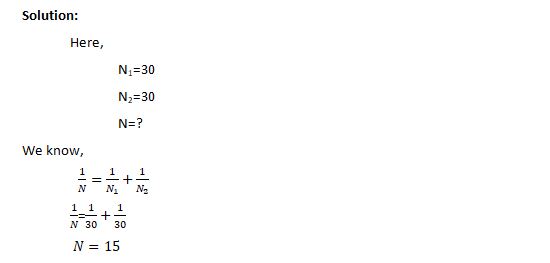
Problem-10: If one single yarn count is 60 and two-ply count is 35, what is the other single yarn count?
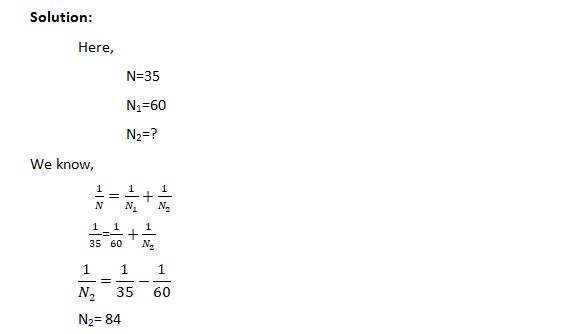
Reference:
- Booth, J. (2008). Principles of Textile Testing. New Delhi: BS Publishers & Distributors.
- P. Angappan, R. G. (2009). Textile Testing. Tamil Nadu: S.S.M. Institute of Textile Technology.
- Wang, L. C. (2008). Physical and mechanical testing of textiles. In Fabric Testing (pp. 90-124). New York: WoodHead Publishing Limited.
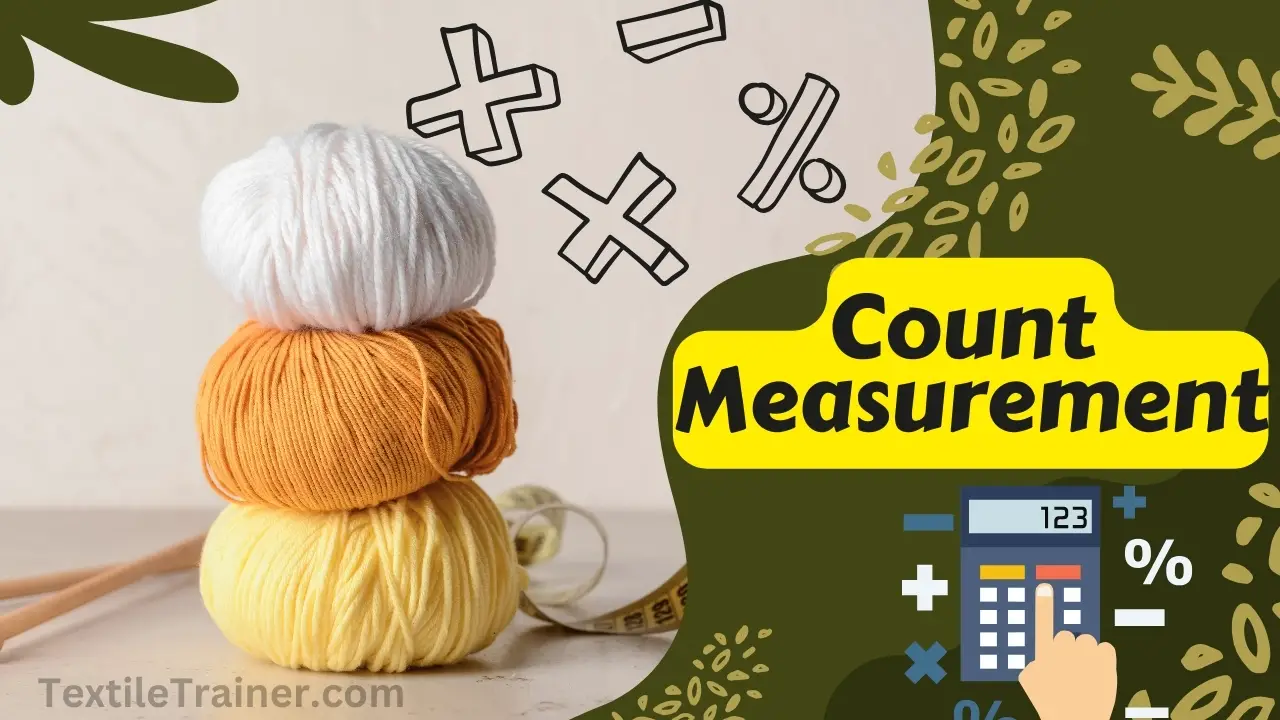






2 thoughts on “Yarn Count Measurement in Shortcut Easy Method with 10 Exercise”